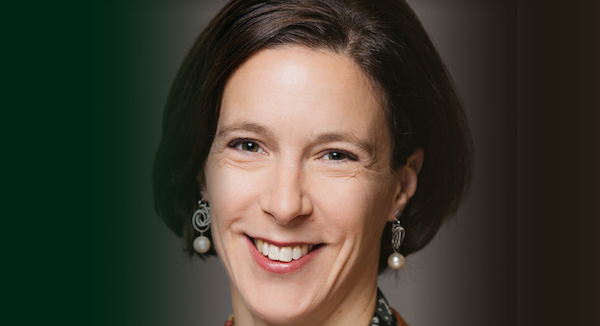Jennifer Hinnell awarded the Governor General’s Gold Medal for linguistics research
Erik Einsiedel - 11 June 2020

Linguistics PhD candidate Jennifer Hinnell has been fascinated by language since she was a child. At age eight, she created an original language of her own, writing it all out in a notebook. This lifelong passion to understand how language influences and reflects what we think and feel, how we tell our stories, and how we interact with others is what led her to explore it in-depth at the U of A, eventually earning her the U of A’s top doctoral award.
As Hinnell describes it, mainstream linguistics was for a long time interested primarily in exploring fully formed sentences and written text, not necessarily casual conversation. “But if you think about it,” she explains, “conversation is where language is really alive, in its primary form. It’s how babies and children first experience language. It’s how we connect (or disconnect!) with others and how we get things done. And it’s full of efficiencies and creativity in really patterned ways.”
Focusing on face-to-face conversation means Hinnell factors in all the other things that accompany speech, including hand gestures, shoulder shrugs, head movements and posture shifts. This is known as “co-speech behaviour.” To study these more finely nuanced aspects of body movement, Hinnell leveraged some unusual tools, including motion capture technology, as well as massive databases of spontaneous conversations recorded on broadcast television, such as talk shows, newscasts and interviews.
With this data, Hinnell uses statistical methods to assess recurring physical patterns within particular expressions in speech. “My research shows that a lot of expressions – both grammatical patterns and fixed expressions in discourse like ‘on the one hand’ or ‘but anyways’ – have a corresponding way of being expressed in our hands, shoulders and head movements.”
Such analysis of face-to-face interaction and language has important implications for the study of oral Indigenous languages and sign languages, which rely on verbal and visual signals. Other applications Hinnell is excited to explore include how her research could make language production more human-like in technologies like virtual agents, and in dialogue for animation, films and video games.
From here, Hinnell plans to pursue a Killam postdoctoral fellowship at the University of British Columbia to work with cognitive linguist Dr. Barbara Dancygier. She will be exploring multimodal linguistic patterns across a variety of media genres, focusing on how people assert, negate and reject beliefs. “This is something that is front and centre of public discourse right now, where the phenomenon of post-truth is really dominating airwaves and the internet,” she says.
In the meantime, Hinnell expresses how honoured she feels to receive the Governor General’s Gold Medal for her research. She credits a whole team of people who helped her with this achievement, including her supervisor Sally Rice who heavily influenced her view of what language structure really is and how to study it.
It was a long, intense road, but Hinnell describes winning the Gold Medal as a testament to the value of spending the time finding out what you really need to be doing in your life, and then going for it.
“I had what some might consider an atypical academic trajectory,” she says. “I worked in software and then the literary arts before going to grad school to study linguistics, and I had two kids in the middle of my PhD.
“But I knew I was in the right place in my life to do all of these things. The world needs all of us, especially right now, to be the best versions of ourselves that we can be. It can take some time and effort to figure out what that looks like for each of us. But once you know, don’t wait for a better time or let anyone – including yourself – talk you out of it.”
Learn more about Jennifer Hinnell in this interview with the Faculty of Graduate Studies and Research, and at her website jenniferhinnell.com.